6mm to 5.56mm SAW Program, the Lightweight XM235

In my previous article, I discussed the brief existence of XM106. This US Army DIY automatic rifle competed with belt-fed 5.56 mm light machine guns as part of the 5.56 mm Squad Automatic Weapon (SAW) Program. The goal was to provide infantry squads with a lightweight weapon that could deliver a high volume of fire. Before this, there had been a 6mm SAW program from approximately 1972 to 1976, which was influenced by the US Army's combat experiences during the Vietnam War and the potential for future conflicts in Europe. These factors contributed to the desire for a lighter weapon with an extended range.
In 1972, the U.S. Army requested the development of a new Light Machine Gun for the Squad Automatic Weapon program. The assessment of potential calibers for this new system determined that the 5.56x45 mm round did not provide adequate effective range and terminal performance. At the same time, the 7.62x51 mm round was considered too heavy. As a result, a new cartridge was needed to meet these requirements. This led to the creation of a compromise caliber, ultimately developing the steel-cased 6x45 mm SAW cartridge at Frankford Arsenal.
The 6 mm SAW utilized a 105-grain (6.8 g) projectile with a muzzle velocity of 2450 feet per second (747 m/s), making the new machine gun capable of effective range beyond 800 meters. One key requirement was that the 6mm projectile contain enough trace compound to be traced beyond 800 meters, a performance that the 5.56 mm round at that time could not achieve.
The SAW program utilized the new experimental 6x45 mm XM732 ball and XM734 tracer cartridges and the standard 5.56 mm weapons, the FN Minimi XM249, and HK21A1 XM262, as controls. The three contenders in the 1975-76 round were made for the 6x45 cartridge: the Maremont XM233, the Philco XM234, and the US Army Rodman Laboratories XM235.
The XM235 was developed at Rodman Laboratories (General Thomas J. Rodman Laboratory) at Rock Island Arsenal in Illinois. Curtis D. Johnson and a design team collaborated on its development. They developed a reasonably lightweight weapon at only 11.68 lbs (5.3 kg).
The XM235 is a gas-operated, fully automatic weapon system that features a long recoil and a soft cycling operation. This design reduces the rate of fire to less than 500 rounds per minute, thereby improving controllability and extending the weapon's service life.
Key components include a dual tube receiver, an integral sprocket feed mechanism similar to that on the DShK, and a unique dual gas system. This gas system applies symmetrical forces to the recoiling parts through two parallel gas pressure-activated rods that work in unison. The recoiling parts operate the integral sprocket feed system, helping to avoid significant asymmetrical forces around the weapon's center of gravity caused by shifting ammunition weight.
Additionally, modular subassemblies can be easily removed and replaced as individual modules. This feature allows for immediate unit-level maintenance with minimal weapon downtime. Field stripping the entire gun can be accomplished quickly, taking around 10 seconds.
The sprocket feed mechanism is designed to fit over and rotate around the lower receiver rod. The main sprocket assembly comprises the sprocket, a cartridge guide spring, and mechanisms for anti-rotation and sprocket release, ensuring proper alignment by engaging with the leading end cap at the sprocket-lower rod interface.
A cam tube assembly rotates around the lower tube, driving the feed mechanism. It features a drive ratchet and a cycloidal cam slot path, allowing smooth and continuous feeding throughout the recoil cycle. This smooth operation occurs as the cam tube assembly is rotated by the longitudinal movement of the main drive pin, which is driven by the operating group moving within the cam slot path.
Notably, this feed mechanism contains about one-fourth of the parts compared to conventional feed mechanisms, such as the M60 Machine Gun.
In the 1970s, the Army's Chief of Staff rejected a new cartridge despite its weight and ballistic performance advantages. Consequently, the Army discontinued the 6mm SAW cartridge. In 1976, the Army redirected SAW design efforts, which included halting the development of the 6mm SAW cartridge and shifting its focus to 5.56 mm light machine gun designs. This shift included the XM248, FN XM249, and HK XM262.
The Army opened solicitations for the manufacturing of the XM235/XM248, and Ford Aerospace won the contract. At this point, the design was modified for the new 5.56 mm SAW program. This program encompassed the new Ford Aerospace XM248, FN’s XM249, XM106, and H&K’s XM262. This marked the end of the XM235, as it evolved into the XM248.
The XM235/XM248 would have been an interesting test. Its gas system applied symmetrical forces to the recoil through two parallel gas pressure-activated rods that worked in unison with its 500 rounds per minute, making it a very controllable and accurate weapon. It's too bad this cartridge or machine gun didn't proceed any farther.
Source:
- https://apps.dtic.mil/sti/pdfs/ADA013514.pdf
- US3999461A - Modular lightweight squad automatic weapon system - Google Patents
- https://youtu.be/0ON5sSwprQU?si=G2cehjf1qDbnmpVC
- https://apps.dtic.mil/sti/tr/pdf/ADA094051.pdf
- https://apps.dtic.mil/sti/tr/pdf/ADA026161.pdf
- https://patents.google.com/patent/US4061074

Lynndon Schooler is an open-source weapons intelligence professional with a background as an infantryman in the US Army. His experience includes working as a gunsmith and production manager in firearm manufacturing, as well as serving as an armorer, consultant, and instructor in nonstandard weapons. His articles have been published in Small Arms Review and the Small Arms Defence Journal. https://www.instagram.com/lynndons
More by Lynndon Schooler
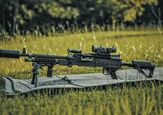

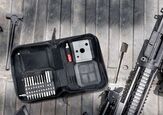
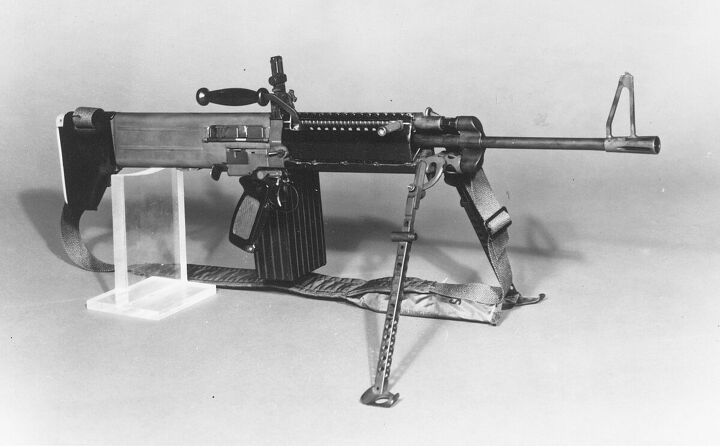











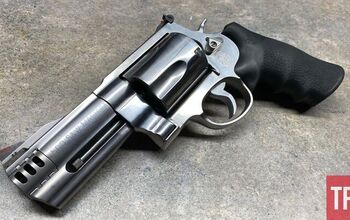
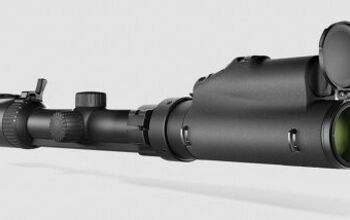

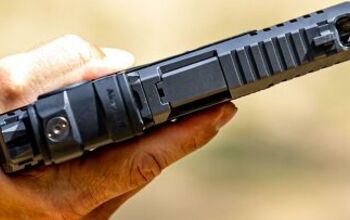



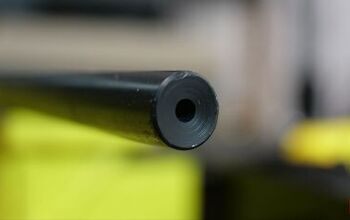






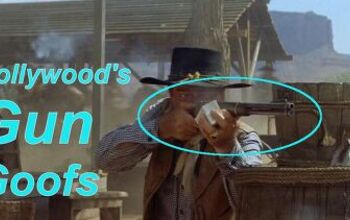

Comments
Join the conversation
Excellent write up and information. Well done.
Good article! My sincere hope is that someday a gun nerd will win a big fat lottery and open a shop devoted to tracking down design blueprints for neat old never-weres like this and making limited production runs of them, Just Because.
I like it and hate it at the same time. The inner workings are elegant and easy to understand, the lack of a top cover would have made it easier to eventually add optics.
And then there's the outside that looks like it was designed by an 8 year old.